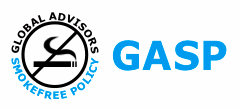A Tobacco Control Policy & Legal Resource Center
Supporting Smokefree Air & Tobacco-Free Lives
Why is New Jersey’s CTCP Program Worth Saving?
Why is New Jersey’s CTCP Program Worth Saving?
There is still work to be done. Teen smoking rates are higher than for adults, and eliminating CTCP will result in increased teen smoking rates, leading to increased adult smoking rates. CTCP has funded educational campaigns about the dangers of secondhand smoke, and protected millions of people from exposure to this class A carcinogen. Without the CTCP, resources will not be available to help protect people from secondhand smoke, and help smokers who want to quit smoking.
Click here to read GASP’s policy paper for raising revenue by increasing cigarette-related licensing fees.
Click here to read about the positive impact and outcome of New Jersey’s CTCP, and how the $7.5 million is distributed to tobacco control, prevention and cessation efforts across the State.
Click here to read how ending CTCP funding will negatively impact New Jersey,and the possible loss of $50 million Federal Block Grant to NJ Addiction Services if NJ cannot comply with the Synar Amendment. A report published in August 2012 by the Substance Abuse and Mental Health Services Administration (SAMHSA), shows New Jersey’s non-compliance rate at 8.5%. The following year’s SAMHSA report , published on August 28, 2013 which covers inspections from October 1, 2010 to September 30, 2013, showed that NJ’s non-compliance rate was 10.5%, a two-percentage point increase. The August 28, 2013 report reported that the national average was 9.1%, which is 1.4% lower than New Jersey’s 10.5% non-compliance rate. New York State’s noncompliance rate was 5.8%, Pennsylvania was 9.6%, Delaware was 8.1%, Rhode Island was 9.9%, and Connecticut was 11.3%.
Click here for a sample letter with talking points you can use in your correspondence.
Click here to read GASP budget testimony.
Click here to read the Toll of Tobacco on the state of New Jersey from “The Campaign for Tobacco Free Kids”.
Click here to read the NJ Breathes white paper on the importance of sustained funding for NJ’s CTCP.
Click here to see a NJ Breathes flyer about New Jersey’s embarrassing funding level.
Click here to read about how smoking rates increased when California, Massachusetts, Florida, Indiana, and Minnesota cut their states’ tobacco control funding. Bottom line: Tobacco control funding cuts resulted in increased teen and adult smoking rates, as reported by the Campaign for Tobacco-Free Kids.
Impact of Cigarette Taxes
Click here to read how New Jersey can equalize taxes on all tobacco products, which promotes tax fairness, increases state revenues, and improves public health.
For more information click to read:
- 2012 study in the reduction in tobacco use by teens due to the 2009 federal tobacco tax increase
- Negative health impacts from a $.30 cigarette tax decrease
- A study about the effect of cigarette prices on youth smoking
- Raising cigarette taxes reduces smoking
- Raising cigarette taxes always raises revenue (while reducing smoking)
- A tax report with the impact of a $1 increase in NJ’s cigarette tax
New Jersey’s Medicaid Program’s healthcare spending is expected to increase by $67 million, if the state’s cigarette tax is reduced by 30 cents per pack. In addition, youth and adult smoking rates will increase, according to Campaign for Tobacco Free Kids. A2590, introduced on March 22, 2010, will reduce NJ’s cigarette tax rate by 30 cents per pack and reduce revenue dedicated to the Health Care Subsidy Fund. The bill was referred to the Assembly Appropriations Committee. Click here to read A2590.
Negative Impact of Funding Cut
An effective state level program to reduce tobacco use and save lives needs to include program funding, as well as taxes and smokefree public places. Individually, none of these components are as effective as a comprehensive program that includes all three. States that have well-funded programs have the best success rates. For more information click to read:
- A combination of tobacco tax increases and well-funded tobacco control programs are the most effective
- An Effective Tobacco Control Policy needs to be comprehensive
- New Jersey impact on youth smoking
- New Jersey benefits and savings from smoking declines
It’s not time to be penny-wise and pound-foolish. Funding CTCP at $7.5 million is less then 1% of the $750 million in cigarette tax revenues to be generated for the State Treasury. Investing at least a maintenance level of $7.5 million in CTCP will reap health and economic rewards for the state, not only in this fiscal year, but for the next 3 years of Governor Christie’s term.
